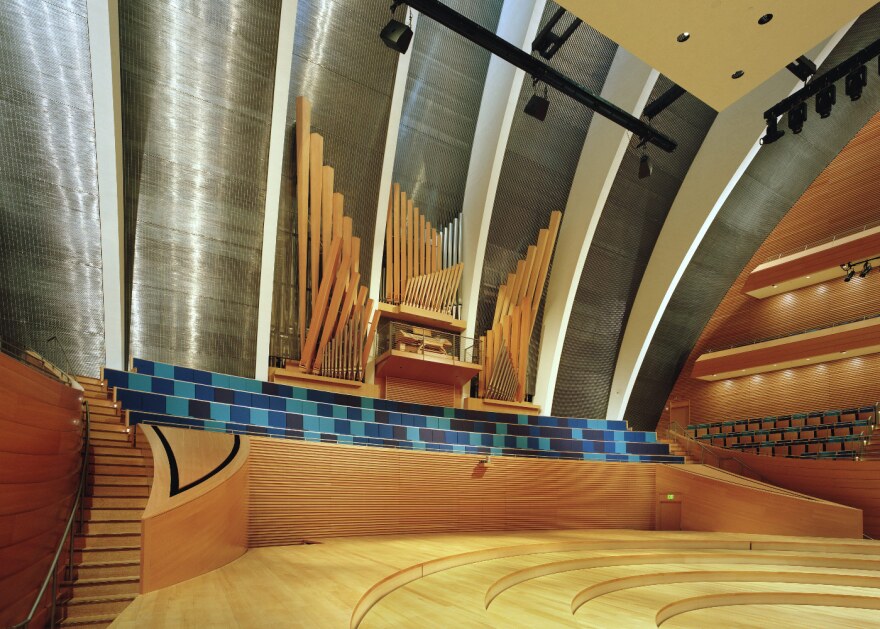Jan Kraybill, principal organist for the Dome and Spire Organ Foundation and organ conservator at the Kauffman Center for the Performing Arts, plays and maintains the three largest pipe organs in the Kansas City metro area. The Kauffman Center's Casavant organ ranks third with 5,448 pipes.
"On this organ, I have an amazing array of colors that I can contribute to the [Kansas City] Symphony’s sound," Kraybill told Up to Date host Steve Kraske, "Colors that are different than what the Symphony can produce.”
A new CD, Organ Polychrome: The French School, recorded at the Kauffman Center, features music by French composers, such as Jehain Alain, Joseph Bonnet, and Louis Vierne.
Kraybill, an educator, musician, as well as avid motorcyclist, compares riding her Harley-Davidson to playing the Casavant organ, where one is surrounded by sound.
“As you play it, you are sitting among the pipes that you are playing, you are right there with them. Really, the sense of power that you get from all around you, it’s amazing.”
Interview Highlights:
On learning to use both hands and feet
There’s a separate pedalboard for your feet; it’s like a keyboard that has foot-sized keys. When you’re an organist, one of the first things you have to learn is to make your hands and your feet operate separately. So it’s a bit of a mental twist.
I had been playing piano since I was 3 years old. At 14, I took up the organ, and I would say, it probably took until I was 18, 19, before I was really comfortable with playing hands and feet with separate melodies.
Your ankles have to be much more flexible; you have to just be able to manipulate your feet in ways that I can’t think of another activity that we do that would call for that kind of flexibility and precision.
On playing the organ as a workout
I always say practicing the organ is the best exercise both mentally and physically that I know of to do, and it’s also for me the most fun.
I take yoga, yoga classes and when we get to core exercises, I’m always the champion of the class because when you’re sitting on an organ bench and you’re operating your hands and feet separately, your core has to be very, very strong.
It’s just an example of how physically taxing playing the organ, especially concert organ literature, can be.
On the differences between the piano and the organ
I think every pianist can become an organist, but it takes a lot of work. So not every pianist has the motivation to become an organist. And I also don’t want to compare the two instruments as if one is better than the other. I’m also a pianist, I enjoy doing piano recitals as well.
It’s a different range, a different calling that I have, to the two instruments. I enjoy that I get to do both in my career.
If I show up to play a piano recital, what I need to do is get used to the action of the piano that I’m going to be playing. It takes, for me, maybe a couple of hours to get used to that action. But the sound that I get from the piano is a piano sound.
When I show up to play an organ recital, I need maybe two or three days at an organ…so that I can choose what sounds I want to use on this particular organ. Every organ is different, every organ is custom designed for the space that it resides in.
On playing the Kauffman Center’s organ for the first time
It was unforgettable. I’m a very emotional person; it comes out in music, it came out in my first experience with that organ…
I knew how hard people had worked on making the Kauffman Center itself a reality, and then making this magnificent instrument a reality, so I was thinking of all of them when I sat down to the play this organ for the first time. And then just the sheer power of it.





